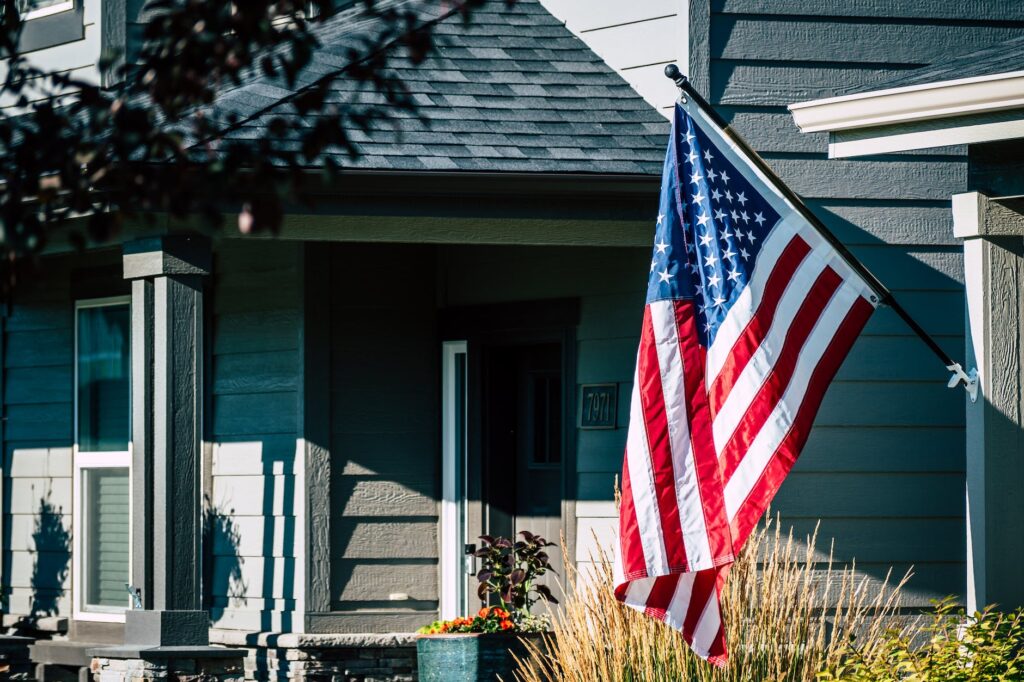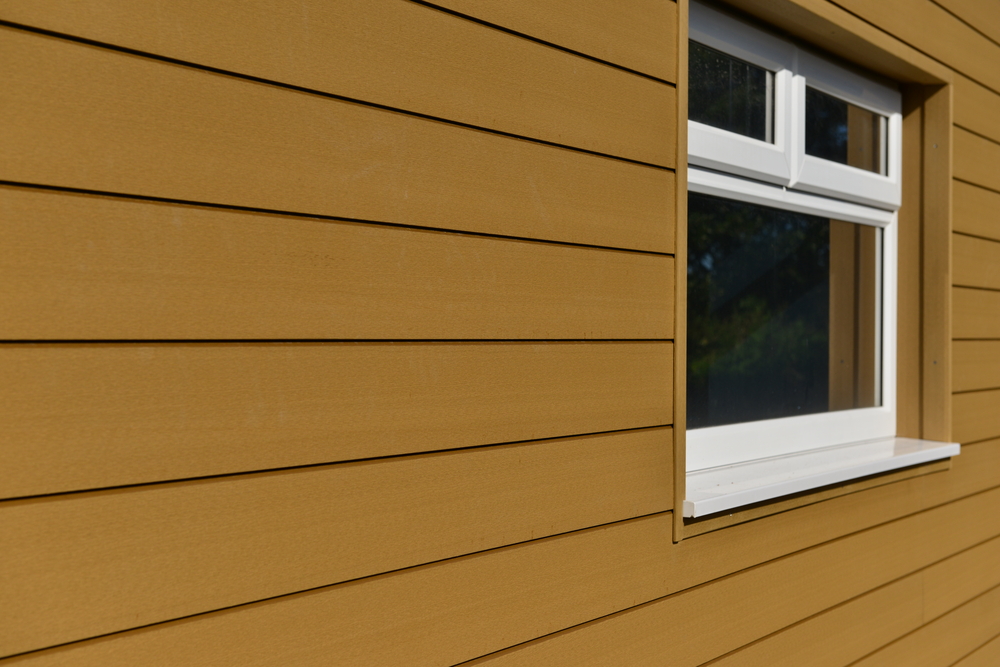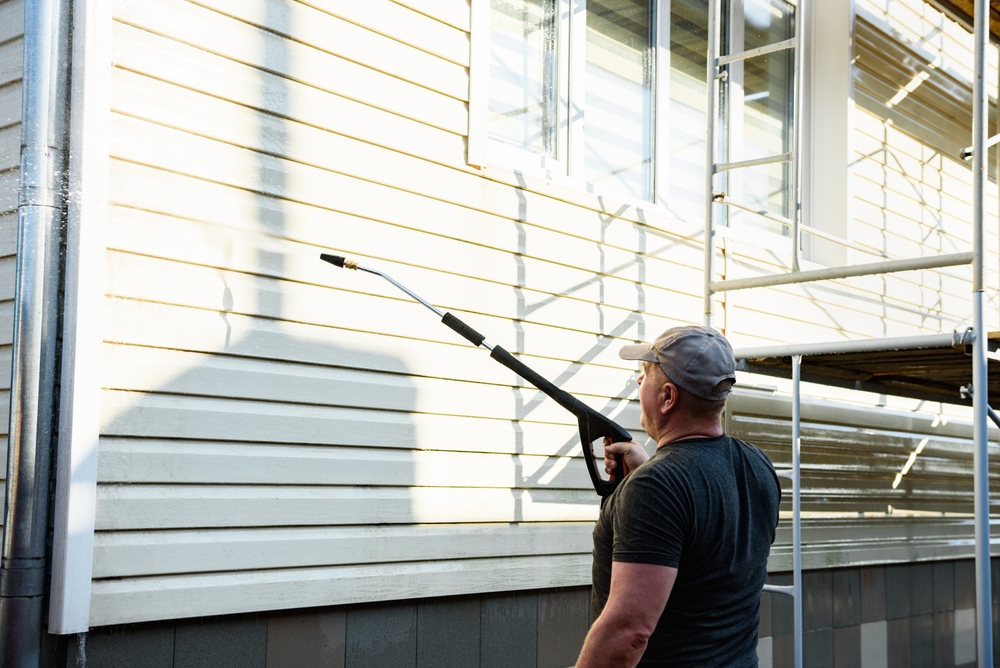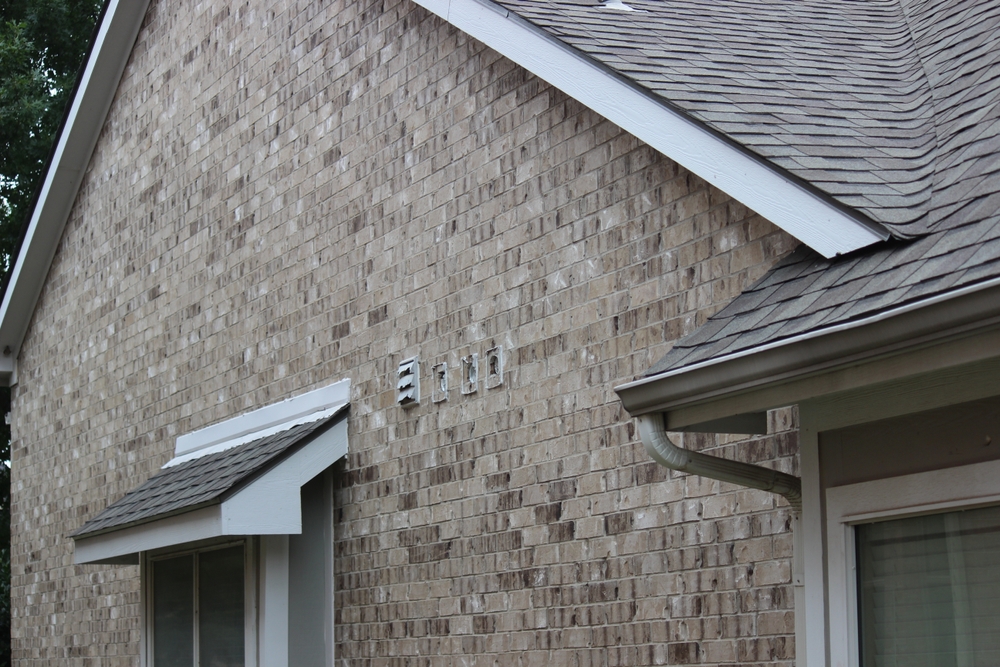Introduction
Traditional siding and window styles have a unique way of capturing the essence of American tradition. These styles have stood the test of time and continue to be popular choices for homeowners seeking a classic look for their homes. Let’s explore some of the most beloved and iconic siding and window styles that pay homage to the rich architectural heritage of the United States.
Board and Batten: A Rustic Appeal
Board and batten siding is a timeless and popular choice among homeowners who seek to infuse their homes with a rustic appeal. This classic style is characterized by wide vertical boards, known as boards, that are accompanied by narrow strips, called battens, which cover the joints between the boards. The alternating pattern created by the boards and battens gives the siding a charming and traditional look that harks back to the architectural styles of barns and farmhouses.
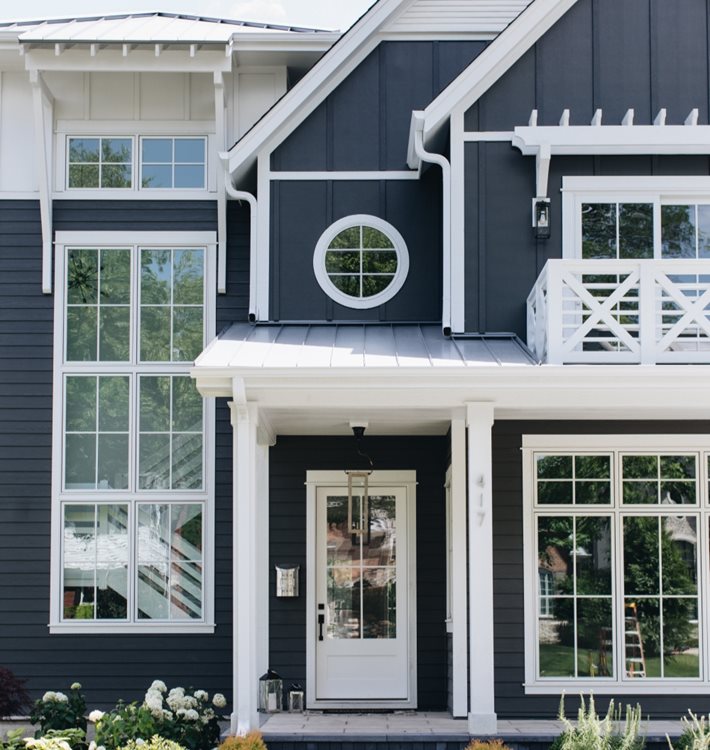
One of the reasons why board and batten siding continues to be a favored option is its versatility in terms of materials. Homeowners have the freedom to choose from a variety of materials to achieve their desired aesthetic. Wood, with its natural warmth and character, remains a popular choice for an authentic rustic look. However, vinyl and fiber cement are also viable alternatives that offer durability, low maintenance, and the ability to mimic the appearance of wood.
When opting for board and batten siding, homeowners can explore different design variations to suit their preferences and the architectural style of their homes. The width and spacing of the boards and battens can be adjusted to create a unique look, whether it’s a more traditional and pronounced appearance with wider boards and narrower battens or a more contemporary twist with narrower boards and wider battens.
The Ultimate Guide to Board and Batten Siding: Everything You Need to Know
In addition to its aesthetic appeal, board and batten siding also provides functional benefits. The vertical orientation of the boards and battens helps to create a protective barrier against the elements, enhancing the durability and weather resistance of the home’s exterior. Furthermore, the natural gaps between the boards and battens allow for proper airflow, promoting ventilation and reducing the risk of moisture buildup.
With its rustic charm and adaptability, board and batten siding continues to be a popular choice for homeowners looking to add character and a sense of tradition to their homes. Whether it’s a farmhouse nestled in the countryside or a suburban residence seeking a touch of rustic elegance, board and batten siding offer a versatile and enduring option. By selecting the appropriate materials, adjusting the design elements, and working with experienced professionals, homeowners can achieve a stunning and authentic rustic look that stands the test of time.
Clapboard(Lap Siding): The Quintessential American Siding
Clapboard siding, also referred to as lap siding, holds a prominent position as one of the most iconic and extensively utilized siding styles in American architecture. With its rich history and enduring popularity, clapboard siding continues to captivate homeowners with its timeless appeal and distinctive characteristics.
The hallmark of clapboard siding lies in its composition of long, horizontal boards that elegantly overlap one another. This design creates not only an aesthetically pleasing visual effect but also a highly functional weather-resistant barrier against the elements. By allowing the boards to interlock and provide overlapping coverage, clapboard siding effectively shields the underlying structure from rain, wind, and other external factors, ensuring the longevity and durability of the home.
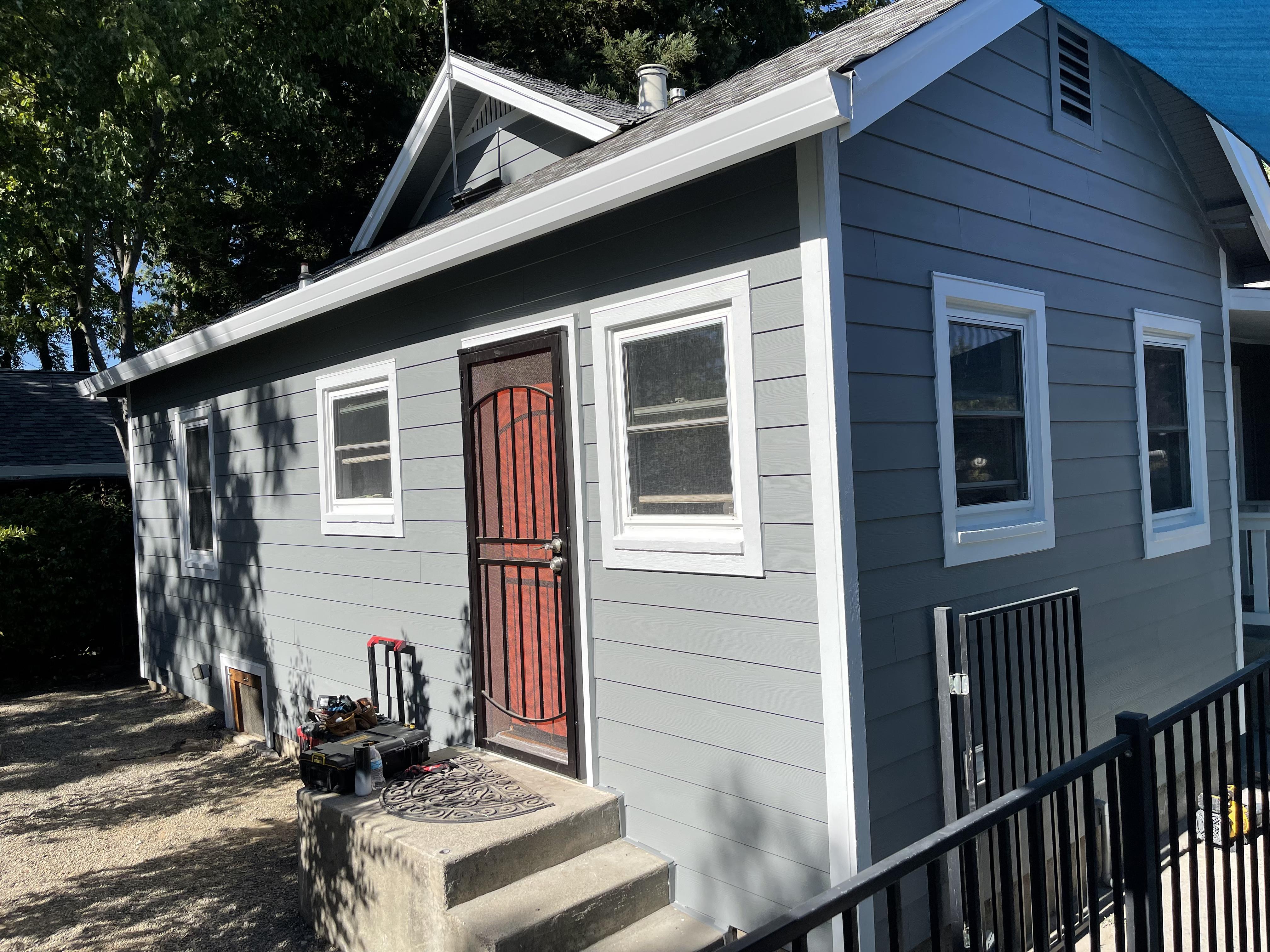
The association between clapboard siding and colonial and Cape Cod-style homes further emphasizes its significance in traditional American design. Colonial-style homes, inspired by the architectural styles prevalent during the colonial period, often feature clapboard siding as a prominent exterior cladding. The simplicity and understated elegance of clapboard siding complement the overall aesthetic of colonial homes, contributing to their timeless appeal.
Similarly, Cape Cod-style homes, with their roots in New England’s coastal regions, frequently showcase the charm of clapboard siding. The clean lines and horizontal orientation of the siding harmonize with the modest and classic design principles of Cape Cod architecture, embodying a sense of understated sophistication and authenticity.
In addition to its visual allure and cultural significance, clapboard siding offers practical benefits as well. The overlapping design effectively sheds water and prevents moisture from penetrating the interior, helping to maintain a dry and comfortable living environment. Furthermore, the flexibility of clapboard siding allows for ease of installation, repair, and replacement, making it a practical choice for homeowners and builders alike.
With its rich heritage and enduring popularity, clapboard siding stands as a testament to the timelessness and versatility of traditional American design. Whether adorning historic colonial homes or adding a touch of classic elegance to modern residences, clapboard siding continues to be celebrated for its distinctive charm, weather resistance, and contribution to the architectural heritage of the United States.
Colonial-Style Windows: Elegance and Symmetry
Colonial-style windows, renowned for their symmetrical design and timeless elegance, have long been revered for their contribution to the architectural landscape. These windows serve as a testament to the exquisite craftsmanship and attention to detail prevalent in Colonial, Georgian, and Federal designs.
At the heart of Colonial-style windows lies their characteristic feature: multiple panes divided by muntins, and narrow strips of wood or metal that enhance both structural integrity and aesthetic appeal. The careful arrangement of these panes within the window frame creates a sense of balance and proportion, resulting in a visually striking composition.
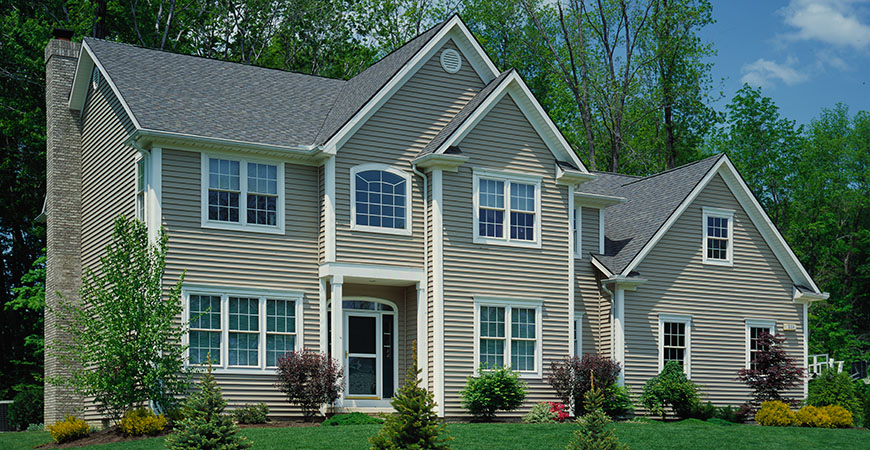
The symmetrical design of Colonial-style windows is a defining element that adds a touch of sophistication to any architectural style. Whether adorning a Colonial home inspired by the historic dwellings of the early settlers or incorporated into Georgian and Federal designs influenced by the refined tastes of the late 18th and early 19th centuries, these windows contribute to an atmosphere of timeless elegance.
One notable aspect of Colonial-style windows is the versatility they offer in terms of customization. Homeowners and architects can choose from various pane configurations, including single-hung, double-hung, or casement styles, to suit their preferences and architectural vision. The size and shape of the panes can also be tailored to meet specific design requirements, whether it’s creating a harmonious rhythm of smaller panes or showcasing a grand statement with larger, more expansive glass surfaces.
In addition to their aesthetic appeal, Colonial-style windows serve a functional purpose. The muntins, apart from enhancing the visual impact, provide structural support to the window, ensuring stability and longevity. Moreover, the division of the panes allows for easy maintenance and repair, as individual sections can be replaced or repaired without compromising the entire window.
Colonial-style windows transcend time, bridging the gap between past and present with their enduring charm. They continue to grace countless homes, embodying a commitment to traditional design principles and a nod to the architectural heritage of the United States. Whether as a faithful replication of historic styles or as a contemporary reinterpretation, Colonial-style windows remain a symbol of elegance and refinement in residential architecture.
Victorian-Style Windows: Ornate Beauty
Victorian-style windows, renowned for their ornate beauty and intricate details, stand as a testament to the opulence and artistic flair of the Victorian era. These windows are treasured for their ability to transform ordinary spaces into extraordinary showcases of craftsmanship and design.
At the heart of Victorian-style windows lies their distinctive feature: the incorporation of decorative glass patterns. Stained or leaded glass takes center stage, captivating the eye with its vibrant colors and intricate designs. These exquisite glass panels, often featuring floral motifs, geometric patterns, or pictorial scenes, are meticulously crafted to create a visual feast of light and color. The interplay of sunlight through the stained or leaded glass adds a magical ambiance to the interior, casting mesmerizing patterns and hues that dance across the room.
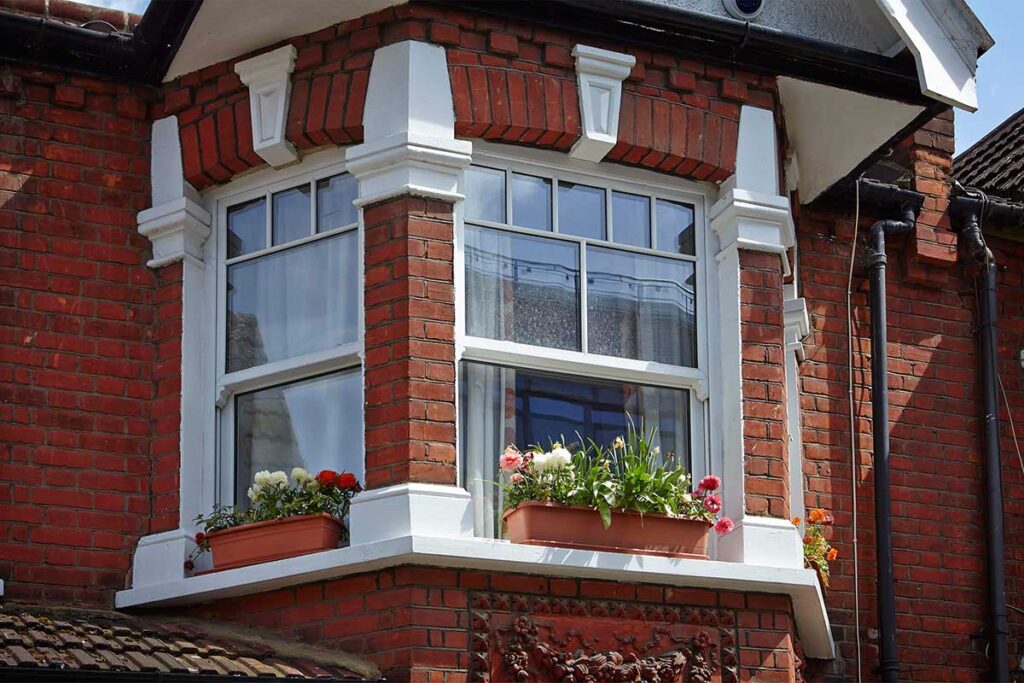
In addition to their captivating glasswork, Victorian windows are characterized by their elaborate woodwork. Intricately carved frames, intricate moldings, and decorative trims grace these windows, elevating them to works of art. The woodwork often showcases the craftsmanship of the era, with delicate details such as rosettes, scrollwork, and filigree accents that exude a sense of luxury and refinement.
Victorian-style windows find their natural home in architectural styles such as Queen Anne, Second Empire, and Italianate. These windows perfectly complement the grandeur and charm of these ornate architectural styles, serving as focal points that draw the eye and enhance the overall aesthetic of the structure. In Queen Anne-style homes, the windows often feature bay or oriel configurations, with multiple panels and intricate woodwork that harmonize with the flamboyant nature of the design. In Second Empire and Italianate-style homes, tall and narrow windows with arched or segmented tops, adorned with decorative glass and woodwork, add a touch of elegance and grandeur to the façade.
Beyond their aesthetic allure, Victorian-style windows offer practical benefits as well. The multiple glass panes and intricate woodwork provide insulation and protection against the elements, ensuring comfort and energy efficiency. Furthermore, the attention to detail in the craftsmanship of these windows speaks to their durability, as they have withstood the test of time and remain as timeless architectural elements.
Victorian-style windows continue to captivate admirers and inspire homeowners and designers alike. Whether adorning historic Victorian homes or being incorporated into modern residences seeking a touch of nostalgic charm, these windows serve as captivating features that evoke a sense of luxury, beauty, and a connection to a bygone era. They remind us of the intricate craftsmanship and artistic vision of the Victorian period, leaving an indelible impression on those fortunate enough to gaze through their stunning panes.
Craftsman-Style Windows: Simplicity and Functionality
Craftsman-style windows, beloved for their emphasis on simplicity, functionality, and natural materials, stand as a testament to the enduring beauty of the Arts and Crafts movement. These windows showcase a commitment to handcrafted details and a deep-rooted connection to nature, capturing the essence of craftsmanship and design principles that continue to resonate with homeowners and architects today.
At the core of Craftsman-style windows is their signature design featuring a single large pane of glass framed by thick, sturdy wood. This design choice allows for an abundance of natural light to flood the interior space while providing unobstructed views of the surrounding environment. The simplicity of the single-pane configuration emphasizes the harmony between the interior and exterior, allowing the beauty of the outdoors to seamlessly merge with the comfort of the indoors.
Craftsman-style windows are often associated with bungalows, prairie, and craftsman-style homes, where they play a pivotal role in defining the architectural character. These windows serve as key design elements, serving both aesthetic and functional purposes. The clean lines and unadorned frames of Craftsman-style windows complement the overall simplicity and modesty of these architectural styles, creating a cohesive and harmonious visual appeal.

In line with the principles of the Arts and Crafts movement, Craftsman-style windows celebrate the use of natural materials. Thick and sturdy wooden frames, often made from oak, mahogany, or other indigenous woods, showcase the beauty and durability of these materials. The handcrafted details and joinery techniques employed in the construction of these windows further highlight the artisanal quality and attention to detail that define Craftsman-style architecture.
Beyond their aesthetic charm, Craftsman-style windows also embody a functional aspect. The robust construction and quality materials provide excellent insulation, helping to maintain a comfortable and energy-efficient living environment. The integration of natural light through the large panes of glass enhances the sense of openness and connection to the outdoors, fostering a seamless transition between the interior and exterior spaces.
Craftsman-style windows continue to captivate homeowners and architects seeking a timeless and organic aesthetic. The inherent simplicity, functionality, and connection to nature embodied by these windows resonate with those who appreciate the beauty of handcrafted details and the harmonious relationship between the built environment and the natural world. Whether adorning historic Craftsman homes or being incorporated into contemporary residences inspired by the movement, Craftsman-style windows serve as poignant reminders of the enduring appeal of craftsmanship and design that celebrates simplicity and the inherent beauty of natural materials.
Cottage-Style Windows: Cozy and Charming
Cottage-style windows hold a special place in the hearts of homeowners, as they effortlessly bring a cozy and charming atmosphere to any abode. With their distinct characteristics and delightful aesthetics, these windows evoke the essence of countryside cottages, infusing a sense of warmth and tranquility into the living spaces.
A defining feature of cottage-style windows is the use of small panes of glass divided by muntins. This design choice pays homage to the traditional craftsmanship of yesteryears, where larger sheets of glass were less accessible or practical. The division of the panes by muntins creates an enchanting visual appeal, reminiscent of the quaint countryside cottages that dot pastoral landscapes.
Cottage-style windows find their natural home in various architectural styles, including cottage, farmhouse, and English Tudor. These styles share a common thread of simplicity and rustic charm, and the inclusion of cottage-style windows serves to enhance these characteristics. In cottage-style homes, these windows play a pivotal role in defining the cozy and inviting atmosphere that epitomizes cottage living. Farmhouse-style homes, with their emphasis on functionality and a connection to nature, embrace cottage-style windows as key elements that bring in natural light while maintaining a sense of tradition. English Tudor-style homes, inspired by the medieval architecture of England, incorporate cottage-style windows to capture the essence of charming English countryside cottages.
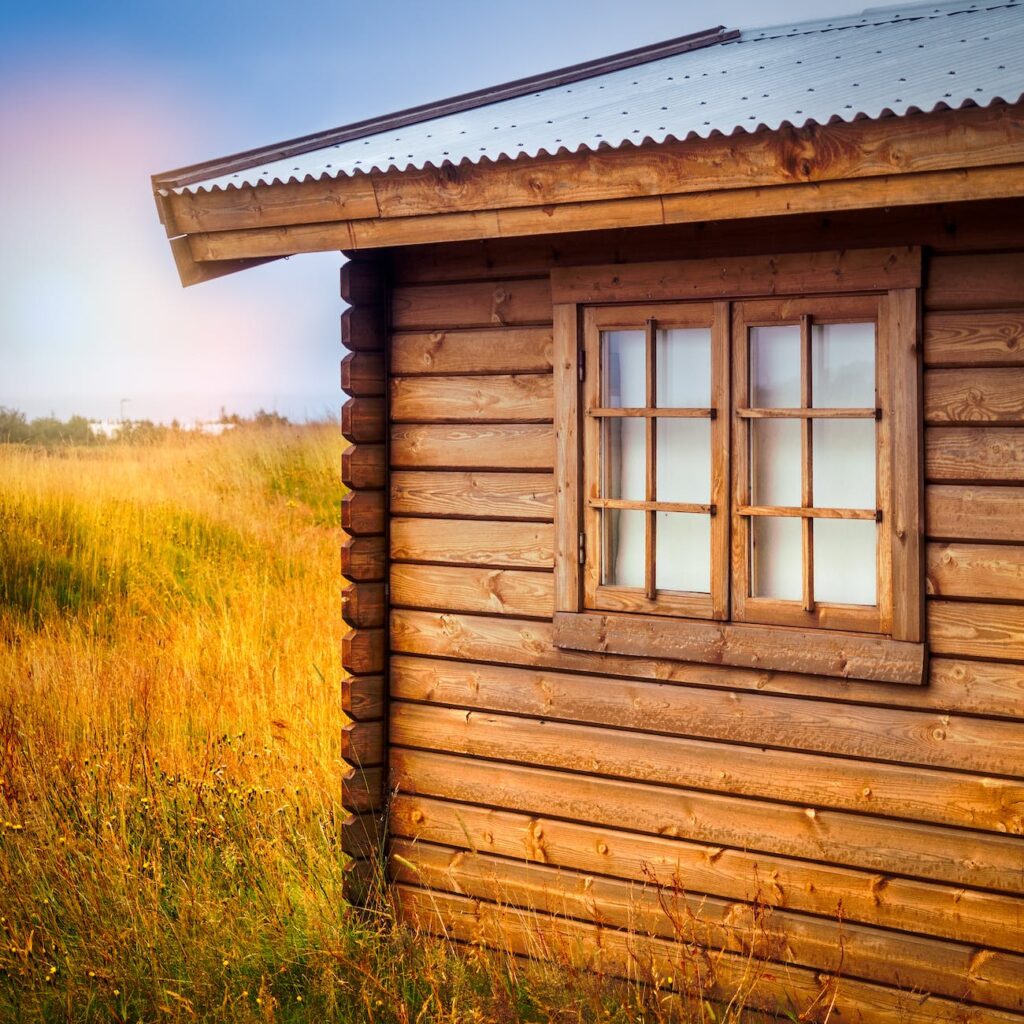
Beyond their aesthetic appeal, cottage-style windows also contribute to the functionality of a home. The multiple panes of glass provide insulation, helping to regulate temperature and improve energy efficiency. Additionally, the smaller panes allow for flexibility in ventilation, as they can be individually opened or adjusted to control airflow and maintain a comfortable indoor environment.
Cottage-style windows radiate a sense of nostalgia and a longing for simpler times. Their picturesque appearance, reminiscent of idyllic country cottages, evokes a sense of tranquility and comfort. These windows add a touch of character and personality to any home, transforming it into a welcoming haven that embraces the joys of rustic living.
Whether adorning a quaint cottage, a charming farmhouse, or an English Tudor-style residence, cottage-style windows become cherished features that bring the beauty of the outdoors inside. With their timeless charm and ability to create a cozy ambiance, these windows celebrate the enduring allure of country living, reminding us of the serenity and simplicity found in the heart of a cottage.
Conclusion
Choosing the right siding and window styles is not only a practical consideration but also a significant step in capturing the essence of American tradition and creating a classic look for your home. The siding and window choices you make can greatly impact the overall aesthetic appeal and historical significance of your property. By taking the time to carefully select styles that align with your personal taste and honor the architectural heritage of the United States, you have the opportunity to transform your home into a timeless masterpiece that stands as a proud symbol of the nation’s rich history.
One popular siding option that exudes a rustic appeal and timeless charm is board and batten. This style features wide vertical boards with narrow strips, known as battens, covering the joints between them. Its alternating pattern creates a charming and traditional look reminiscent of barns and farmhouses. Board and batten siding offers homeowners a versatile range of materials to choose from, including wood, vinyl, or fiber cement, allowing for customization that perfectly suits their desired aesthetic.
Another iconic siding style deeply rooted in American architecture is clapboard siding, also known as lap siding. This enduring option showcases long, horizontal boards that overlap each other, creating a weather-resistant barrier while adding a touch of elegance to your home’s exterior. Clapboard siding has a rich history and is often associated with colonial and Cape Cod-style homes, reflecting the simplicity and timelessness of traditional American design.
When it comes to windows, colonial-style windows hold a special place in the hearts of homeowners seeking a classic and sophisticated look. Known for their symmetrical design and timeless elegance, colonial-style windows feature multiple panes divided by muntins, and narrow strips of wood or metal. This symmetrical arrangement adds a touch of sophistication and complements various architectural styles, including Colonial, Georgian, and Federal designs. By incorporating colonial-style windows into your home, you pay homage to the architectural heritage of the United States and create a visual feast that transcends time.
Craftsman-style windows, on the other hand, emphasize simplicity, functionality, and natural materials. These windows typically feature a single large pane of glass framed by thick, sturdy wood, showcasing the craftsmanship and connection to nature that define the Arts and Crafts movement. Craftsman-style windows find their rightful place in bungalows, prairie, and craftsman-style homes, where they perfectly embody the essence of this architectural style and bring warmth and character to the overall design.
By carefully considering the siding and window styles that align with your personal preferences and the historical significance of American architecture, you have the power to transform your home into a timeless masterpiece that proudly reflects the nation’s heritage. Each option brings its unique charm and character, offering you the opportunity to create a classic look that stands the test of time. Whether you opt for the rustic allure of board and batten siding, the elegant simplicity of clapboard siding, or the symmetrical grace of colonial-style windows, your choices will leave an indelible mark on your home, capturing the essence of American tradition and creating a classic look that will be admired for years to come.
FAQs
Q1. Are traditional siding and window styles expensive?
Traditional siding and window styles can vary in price depending on the materials used and the complexity of the design. While some options may be more expensive, there are affordable alternatives available that can still achieve a classic look.
Q2. Can I mix different siding and window styles in my home?
Yes, mixing different siding and window styles can add visual interest and create a unique aesthetic. However, it’s essential to consider how the different styles will harmonize with each other and the overall architecture of your home.
Q3. Are traditional siding and window styles energy-efficient?
The energy efficiency of traditional siding and window styles can vary depending on the materials used and the installation techniques. It’s important to choose high-quality, energy-efficient products and work with professionals who can ensure proper insulation and sealing.
Q4. Can I install traditional siding and window styles on a modern home?
Yes, traditional siding and window styles can be successfully incorporated into modern homes. The key is to find a balance between the traditional elements and the contemporary design to create a cohesive and visually appealing result.
Q5. Where can I find professional help in choosing traditional siding and window styles?
You can consult with your local contractors, or design professionals specializing in residential architecture to help you choose the best traditional siding and window styles for your home. If you are in Northern California Contact Us for the timeless American look of your home!

